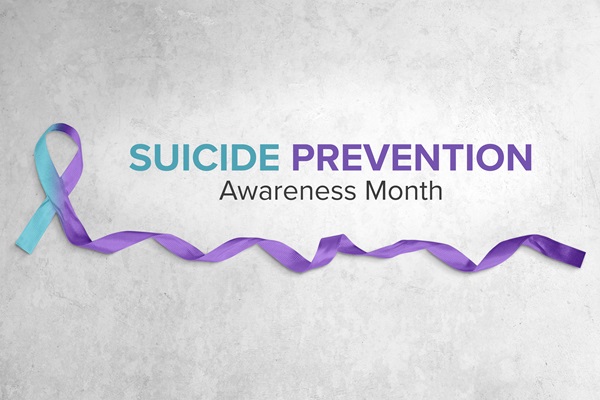September is National Suicide Prevention Month

As September comes to a close, we’re reminded of the loss too many families have felt when loved ones died by suicide. We’re thinking of the communities that have been affected by preventable deaths by suicide. And we also recognize the progress that has been made in identifying and implementing suicide prevention methods that save lives.
September is National Suicide Prevention Month, an opportunity to reflect on the challenging but important work of suicide prevention and the critical role individuals, families, and communities play in saving lives. We’re participating in this effort because we have seen over and over again the devastating impact that deaths by suicide can have.
Know the warning signs
Suicide prevention starts with recognizing that someone is at risk of dying by suicide. Unfortunately, too often, these warning signs go unaddressed. Key warning signs of suicide in adults include:
- Anxious, agitated, or reckless behavior
- Talking about feeling trapped, hopeless, or like a burden to others
- Changing sleep patterns (too little or too much)
- Withdrawal or isolation
- Increased substance use
- Extreme mood swings or overwhelming rage
- Talking about or making plans for suicide
In children and youth, the warning signs often manifest differently:
- Displaying overwhelming emotional distress
- Expressing hopelessness about the future or talking about plans for suicide
- Significant behavioral changes, such as withdrawal from social connections or unusual anger and hostility
- Giving away prized possessions
- Significant increase in agitation or irritability
If someone displays signs of suicide risk, immediate intervention is critical. The QPR model (Question, Persuade, Refer) provides a useful framework for friends, family, and others who interact with at-risk individuals to help prevent suicide. And It’s critical to connect at-risk individuals with suicide prevention resources, including the 988 Lifeline.
Dispelling myths about suicide
- Myth: If someone wants to commit suicide, there’s nothing anyone can do. In reality, suicide is usually an impulsive decision or can seem that way. At times, people can think about a plan, shelve the idea, and then pick up the suicidal thinking and act on the shelved plan when some stressor or thought appears to your loved one. Either way, intervene with keeping the conversation about suicidal thinking going until you feel better about your loved one. However, it is really a good idea to take the QPR course for your own confidence and peace of mind. Eliminating access to lethal means and taking immediate steps to intervene can and does prevent deaths by suicide.
- Myth: Talking about suicide increases the risk of suicide. In fact, talking about suicide or directly asking if a person is thinking about suicide is one of the most important steps to help the person find help.
- Myth: Access to firearms has nothing to do with suicide risk. As we’ve written before, access to firearms can dramatically increase the risk of dying by suicide because guns are much more deadly than other commonly used suicide means like pills and cutting.
- Myth: People who die by suicide are selfish or weak. Far from it. Any kind of killing is hard to do. Suicide isn’t a choice; it’s a reaction to severe emotional pain and feeling that there’s no way out of a bad situation. Many people who die by suicide suffer from psychiatric illnesses like depression, anxiety, bipolar disorder, or substance abuse disorder. People become so overwhelmed that cognitive abilities are weakened severely.
- Myth: Treatment doesn’t work. Effective mental health treatment, including talk therapy, medications, and more, can absolutely reduce suicide risk. The key is to identify and implement the right interventions for a particular person’s needs.
If you have lost a loved one to suicide completion, we’d be honored to help
An important part of suicide prevention is holding medical professionals accountable when they fail to diagnose, manage, and treat suicide risk. Not only do we enforce patient safety rules when we must, but we teach clinicians and hospitals how to avoid being in a malpractice trap by being competent and what that means.
That’s what we do at the Law Offices of Skip Simpson. If you have lost a loved one to suicide, we are here to listen to your story and explain your options. Our law firm serves families throughout the United States. Give us a call or contact us online today.




